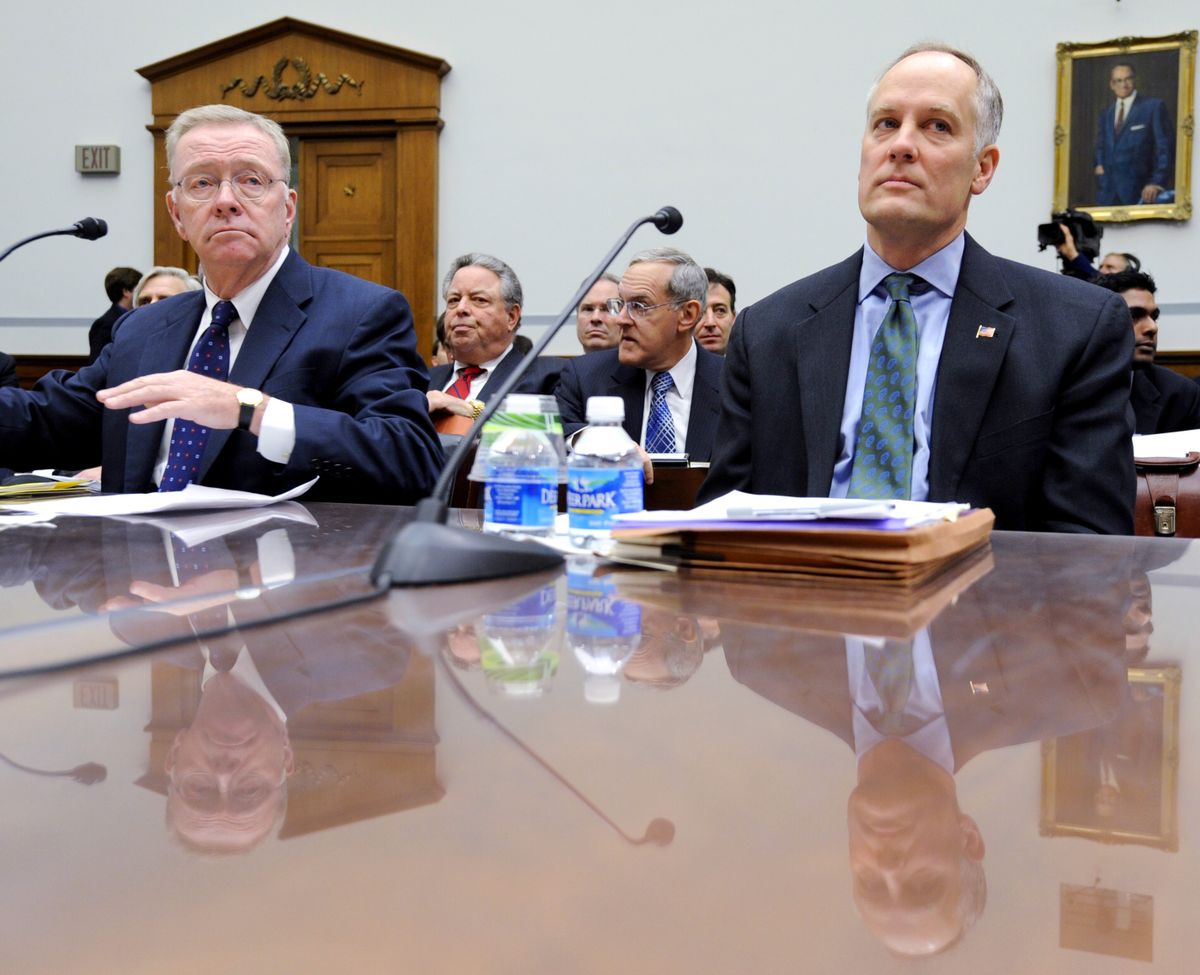Ex-Fannie, Freddie execs face charges
Risk level lowballed, civil fraud case says

WASHINGTON – Two former CEOs at mortgage giants Fannie Mae and Freddie Mac on Friday became the highest-profile individuals to be charged in connection with the 2008 financial crisis.
In a lawsuit filed in New York, the Securities and Exchange Commission brought civil fraud charges against six former executives at the two firms, including former Fannie CEO Daniel Mudd and former Freddie CEO Richard Syron.
The executives were accused of understating the level of high-risk subprime mortgages that Fannie and Freddie held just before the housing bubble burst.
“Fannie Mae and Freddie Mac executives told the world that their subprime exposure was substantially smaller than it really was,” said Robert Khuzami, SEC’s enforcement director.
Khuzami noted that huge losses on their subprime loans eventually pushed the two companies to the brink of failure and forced the government to take them over.
The SEC is seeking unspecified financial penalties, return of ill-gotten gains with interest and a bar against the executives serving as officers or directors of companies.
Mudd, 53, and Syron, 68, led the mortgage giants in 2007, when home prices began to collapse. The four other top executives also worked for the companies during that time.
In a statement from his attorney, Mudd said the government reviewed and approved all the company’s financial disclosures.
“Every piece of material data about loans held by Fannie Mae was known to the United States government and to the investing public,” Mudd said. “The SEC is wrong, and I look forward to a court where fairness and reason – not politics – is the standard for justice.”
Syron’s lawyers said the term “subprime had no uniform definition in the market” at that time.
Fannie and Freddie buy home loans from banks and other lenders, package them into bonds with a guarantee against default and then sell them to investors around the world. The two own or guarantee about half of U.S. mortgages, or nearly 31 million loans.
During the financial crisis, the two firms verged on collapse. The Bush administration seized control of them in September 2008.
So far, the companies have cost taxpayers more than $150 billion – the largest bailout of the financial crisis. They could cost up to $259 billion, according to their government regulator, the Federal Housing Finance Administration.